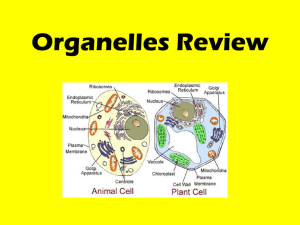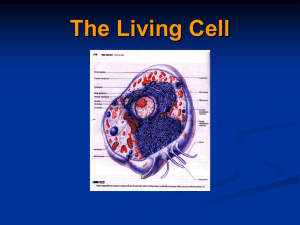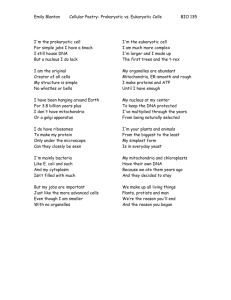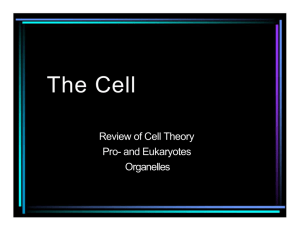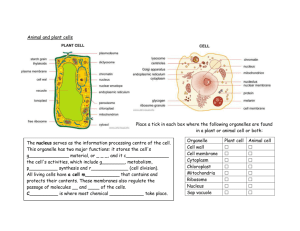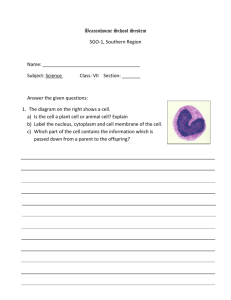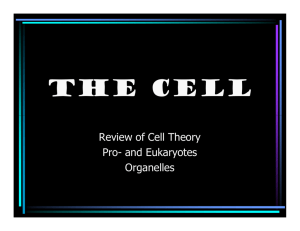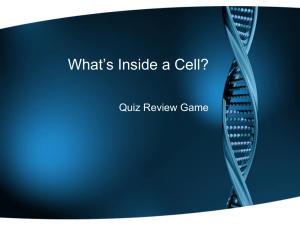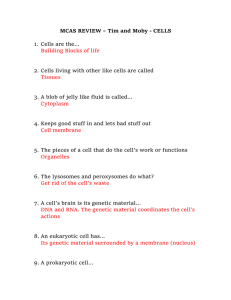Cell-TestName
advertisement
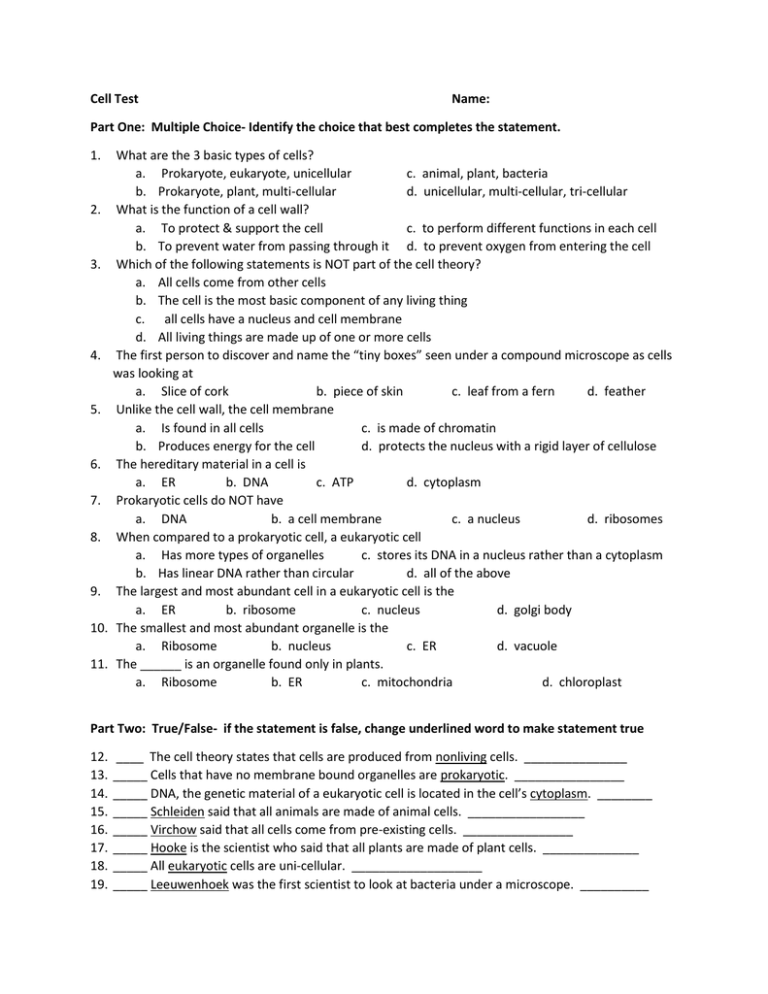
Cell Test Name: Part One: Multiple Choice- Identify the choice that best completes the statement. 1. 2. 3. 4. 5. 6. 7. 8. 9. 10. 11. What are the 3 basic types of cells? a. Prokaryote, eukaryote, unicellular c. animal, plant, bacteria b. Prokaryote, plant, multi-cellular d. unicellular, multi-cellular, tri-cellular What is the function of a cell wall? a. To protect & support the cell c. to perform different functions in each cell b. To prevent water from passing through it d. to prevent oxygen from entering the cell Which of the following statements is NOT part of the cell theory? a. All cells come from other cells b. The cell is the most basic component of any living thing c. all cells have a nucleus and cell membrane d. All living things are made up of one or more cells The first person to discover and name the “tiny boxes” seen under a compound microscope as cells was looking at a. Slice of cork b. piece of skin c. leaf from a fern d. feather Unlike the cell wall, the cell membrane a. Is found in all cells c. is made of chromatin b. Produces energy for the cell d. protects the nucleus with a rigid layer of cellulose The hereditary material in a cell is a. ER b. DNA c. ATP d. cytoplasm Prokaryotic cells do NOT have a. DNA b. a cell membrane c. a nucleus d. ribosomes When compared to a prokaryotic cell, a eukaryotic cell a. Has more types of organelles c. stores its DNA in a nucleus rather than a cytoplasm b. Has linear DNA rather than circular d. all of the above The largest and most abundant cell in a eukaryotic cell is the a. ER b. ribosome c. nucleus d. golgi body The smallest and most abundant organelle is the a. Ribosome b. nucleus c. ER d. vacuole The ______ is an organelle found only in plants. a. Ribosome b. ER c. mitochondria d. chloroplast Part Two: True/False- if the statement is false, change underlined word to make statement true 12. 13. 14. 15. 16. 17. 18. 19. ____ The cell theory states that cells are produced from nonliving cells. _______________ _____ Cells that have no membrane bound organelles are prokaryotic. ________________ _____ DNA, the genetic material of a eukaryotic cell is located in the cell’s cytoplasm. ________ _____ Schleiden said that all animals are made of animal cells. _________________ _____ Virchow said that all cells come from pre-existing cells. ________________ _____ Hooke is the scientist who said that all plants are made of plant cells. ______________ _____ All eukaryotic cells are uni-cellular. ___________________ _____ Leeuwenhoek was the first scientist to look at bacteria under a microscope. __________ Part Three: Matching a. b. c. d. e. f. g. Cell membrane Cell wall Cytoplasm Mitochondria Lysosomes Vacuoles Golgi bodies h. chloroplast i. endoplasmic reticulum j. ribosomes k. nucleus l. nucleolus m. chromatin ____ 20. Tiny strands inside the nucleus that contain genetic information ____ 21. Jellylike substance where organelles are found ____ 22. Contains chlorophyll; makes food in plants ____ 23. Stores water and other materials ____ 24. Controls what enters and exits the cell; protective outer layer of cells ____ 25. Found inside nucleus; makes ribosomes ____ 26. Destroys worn out or damaged organelles ____ 27. Rigid outer layer of a plant cell ____ 28. Moves materials around the cell; may have ribosomes attached ____ 29. Sorts, packages, and moves proteins around the cell ____ 30. Control center of the cell; contains DNA ____ 31. Releases energy in the cell ____ 32. Makes the proteins Part Four: Short answer – Use the diagram or chart to answer the questions. 33. A student views this cell under a microscope. The cell has a flagellum but lacks a nucleus. What type of cell is this? How do you know? 34. Which of the cells listed in the chart is a prokaryotic cell? How do you know? Part Five: Identify the organelles for the cell below. What type of cell is this? How do you know?
